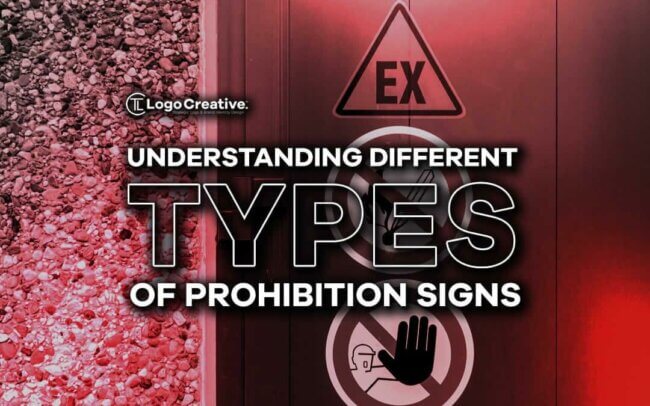Prohibition signs are one of the best ways to establish a set of rules, enforce or restrict a behaviour, or prevent access to an area. In this article we take a look at Understanding Different Types of Prohibition Signs.
As the name suggests, prohibition signs are there to prohibit (deny) something. Usually, it denies an action, for example, No Smoking.
There are certain design practices like the use of the red colour in the design, and often using diagonal lines or a cross on the activity the signs represent to clearly convey the message. One of the benefits of using Prohibition Signs is the visual power for people to understand that a certain action is not allowed, even if they don’t speak the language.
With that being said, let’s explore different types of Prohibition Signs that you might need or use for your business or even at home:
Table of Contents
1. Prohibition Signs for the Areas
First, let’s talk about the signs that restrict access, or the area, in general. You will see them being used in many workspaces, especially in commercial sectors like Hospitals and Industries. They usually have ‘Authorized Personnel Only’ type of signs.
However, there’s also a residential application where people might use them to prevent entry or access to their property. Some examples are ‘Beware of the Dog’ or ‘Keep Out – High Voltage.’
2. Temporary Prohibition Signs
Other most commonly used prohibition signs are the ones that establish a temporary rule. You will especially see them during construction projects, especially if there is a road and they need to block it. Similarly, you will see the use of these signs when someone is cleaning the floor, and people shouldn’t access it. Often, it is also used as a warning sign, ‘Caution – Slippery Floor, Wet Floor, etc.’
So, these types of signs are used to convey a temporary message and restrict activity for a specific time.
3. Prohibition Signs to Restrict Actions or Activity
How many times have you seen the ‘No Smoking’ sign in some areas? You can also find ‘No Running in the Hall’ signs for the School or Hospital. Many restaurants would use ‘No Pets Allowed.’ Similarly, in parks and public spaces, you will see ‘No Littering’ signs.
These are all prohibition signs used to restrict a specific action in a given area. And, of course, these are law-binding. So, in case you still commit the action despite the warning, you run the risk of getting charged for it.
4. Prohibition Signs for Items
Another use of prohibition signs is to clearly show if a certain item is allowed in the area or not. For example, you will see the ‘No Weapons Allowed, No Metals Allowed, No Food & Drinks Allowed’ type of prohibition signs. These are all to restrict and deny the use of specific items.
Some would even show you the ‘No Cellphones Allowed’ type of sign. These are all different types of prohibition signs clearly used for people to understand that certain items aren’t allowed within the vicinity.
The Design Requirement for Prohibition Signs
As stated earlier, prohibition sign designs use red colour, but some might use yellow, as well. All these are to catch attention and provide clear instructions. Apart from the colour, a clear sign or symbol is used to depict the action. For example, in a No Smoking sign, you will see a cigarette with a cross on it or a hand holding the cigarette with a cross on it.
Prohibition Signs need to be designed in a way that they clearly convey the message, regardless of the language barrier. If a sign can’t clearly provide the message, then it is not an effective sign.
Join The Logo Community
We hope this has helped you in Understanding Different Types of Prohibition Signs. If you would like more personal tips, advice, insights, and access to our community threads and other goodies, join me in our community.
You can comment directly on the posts and have a discussion with Andrew, the Founder of The Logo Creative.
*TIP – We recommend Skillshare to learn online. There are tons of classes for everything including graphic design, web design, marketing, branding and business-related courses. Get a free trial with our link and you won’t regret it Trust us!


